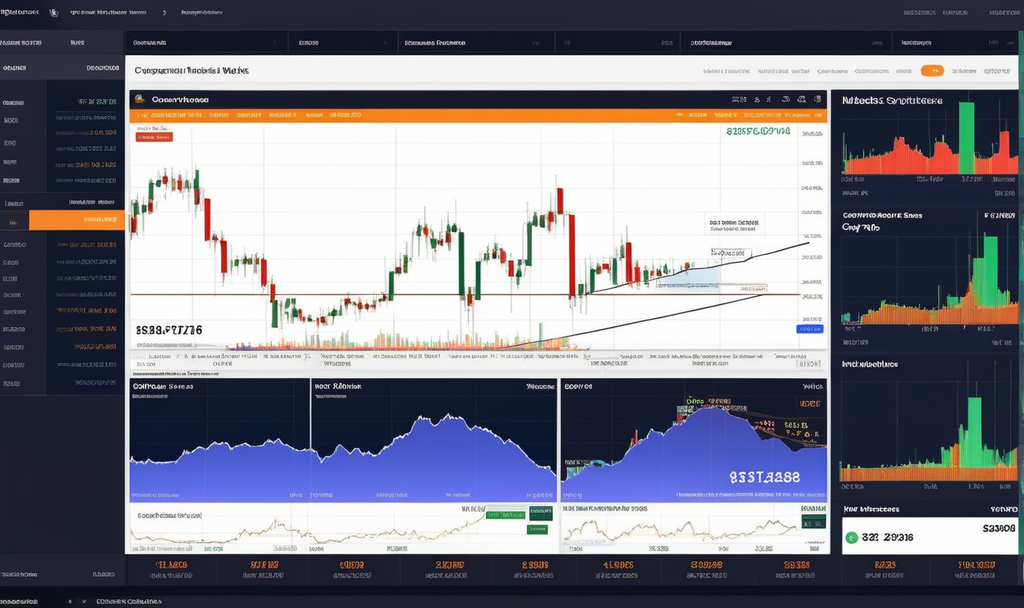In the ever-evolving landscape of cryptocurrency markets, traders and analysts are constantly on the lookout for tools that can provide insights into market cycles. One such tool that has gained popularity is the Elliott Wave Theory. In this case study, we will explore the application of Elliott Wave Theory to crypto market cycles, unveiling its principles and potential benefits.
Understanding the Basics of Elliott Wave Theory
Elliott Wave Theory Origins and Core Principles
Named after Ralph Nelson Elliott, the Elliott Wave Theory is a technical analysis approach that seeks to identify recurring wave patterns in financial markets. According to Elliott, market prices move in distinct waves, reflecting the psychology of market participants. These waves comprise impulsive and corrective phases, forming a structure that repeats at different degrees of trend.
The Five-Wave Pattern
At the heart of Elliott Wave Theory is the five-wave pattern, consisting of three impulsive waves (labeled 1, 3, and 5) separated by two corrective waves (labeled 2 and 4). The impulsive waves represent the direction of the prevailing trend, while the corrective waves denote temporary retracements.
Applying Elliott Wave Theory to Cryptocurrency Markets
Identifying Waves in Cryptocurrency Price Charts
When applying Elliott Wave Theory to cryptocurrency markets, analysts typically examine historical price charts to identify the five-wave patterns. Bitcoin, as the pioneer in the crypto space, often serves as a prime candidate for such analysis. By recognizing these patterns, traders aim to predict future price movements and make informed decisions.
Case Study: Bitcoin’s Bull Run
Let’s delve into a recent example, such as Bitcoin’s bull run in 2021. Analysts using Elliott Wave Theory may have observed a clear five-wave pattern, signaling the upward trend. Understanding these waves could have provided valuable insights for traders, helping them anticipate potential entry and exit points.
Challenges and Criticisms of Elliott Wave Theory in Crypto
Volatility and Unpredictability
While Elliott Wave Theory offers a compelling framework for understanding market cycles, it is not without its challenges. Cryptocurrency markets, known for their extreme volatility, can sometimes exhibit unpredictable behavior that may deviate from traditional wave patterns. Traders must exercise caution and consider other indicators to enhance their analysis.
Strategies for Successful Implementation
Combining Elliott Wave Theory with Other Indicators
To mitigate the limitations of Elliott Wave Theory, traders often combine it with other technical indicators. Moving averages, RSI, and Fibonacci retracement levels can provide additional confirmation or divergence signals, adding layers of analysis to enhance decision-making.
Risk Management and Position Sizing
Successful trading extends beyond accurate market predictions; it involves effective risk management. Traders utilizing Elliott Wave Theory should implement strict risk management strategies and consider appropriate position sizing to safeguard their capital in the face of market uncertainties.
If you have any question about this article, please contact us …
You can easily create a free cryptocurrency wallet with binance …
Conclusion: Navigating Crypto Markets with Elliott Wave Theory
In conclusion, Elliott Wave Theory serves as a valuable tool in deciphering crypto market cycles. By understanding the principles of this theory and its application to historical price charts, traders can gain insights that may inform their decision-making processes. However, it is crucial to acknowledge the challenges and volatility inherent in cryptocurrency markets and complement Elliott Wave analysis with other indicators and risk management strategies. As crypto markets continue to evolve, a comprehensive approach that integrates multiple tools and methodologies remains key to navigating the complexities of this dynamic landscape.

